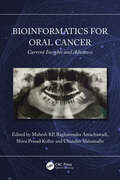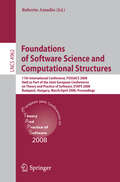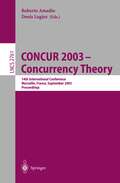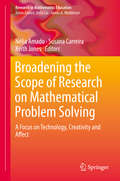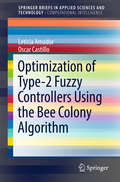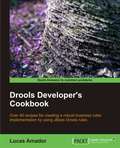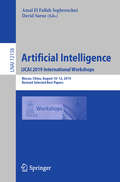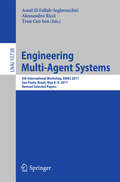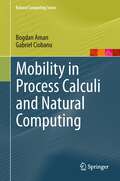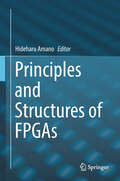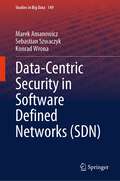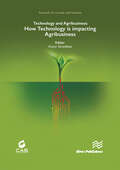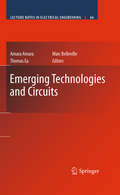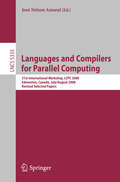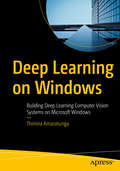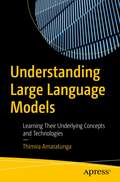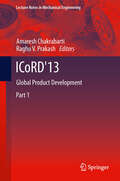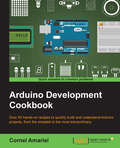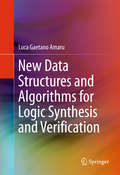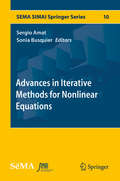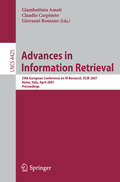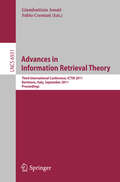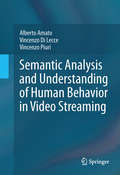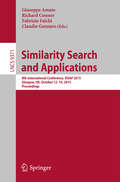- Table View
- List View
Bioinformatics for Oral Cancer: Current Insights and Advances
by Raghavendra Amachawadi Shiva Prasad Kollur Chandan Shivamallu Mahesh KpAmid the rising global concern of oral cancer, this book provides a compelling exploration of the intricate oral cavity, focused on shedding light on early diagnosis and addressing outdated paradigms, it delves into the persistent challenges of oral premalignant lesions. Tailored for both beginners and researchers, its six chapters encompass the spectrum of genome sequencing, diagnostic biomarkers, gene expression, and more. Discover a fusion of basic and clinical sciences, aiming to invigorate the study of bioinformatics and oral cancer, and ultimately improve survival rates.Bioinformatics for Oral Cancer: Current Insights and Advances serves as a comprehensive guide, offering a deep dive into the multifaceted landscape of oral cancer research and bioinformatics. Within its pages, readers will uncover a wealth of knowledge, starting with foundational chapters introducing bioinformatics and establishing the backdrop of oral cancer. The book then progresses into the realm of diagnostic biomarkers, revealing cutting-edge methodologies for their identification in the context of oral cancer. The book’s keen focus extends to gene expression profiles and the intricacies of gene sequencing in the context of oral cancer progression. By systematically unravelling these critical aspects, the book bridges the gap between basic and clinical sciences, equipping readers with a holistic understanding of bioinformatics’ pivotal role in enhancing our grasp of oral cancer’s complexities.By deciphering the enigmatic landscape of oral premalignant lesions, the book equips clinicians and researchers with tools to predict malignant potentials. Its meticulous exploration of gene expression profiles and sequencing promises to reshape early detection strategies, propelling the field towards improved diagnosis and treatment outcomes.
Foundations of Software Science and Computational Structures: 11th International Conference, FOSSACS 2008, Held as Part of the Joint European Conferences on Theory and Practice of Software, ETAPS 2008, Budapest, Hungary, March 29 - April 6, 2008, Proceedings (Lecture Notes in Computer Science #4962)
by Roberto AmadioCONCUR 2003 - Concurrency Theory: 14th International Conference, Marseille, France, September 3-5, 2003, Proceedings (Lecture Notes in Computer Science #2761)
by Roberto Amadio Denis LugiezBroadening the Scope of Research on Mathematical Problem Solving: A Focus On Technology, Creativity And Affect (Research In Mathematics Education Ser.)
by Nélia Amado Susana Carreira Keith JonesThe innovative volume seeks to broaden the scope of research on mathematical problem solving in different educational environments. It brings together contributions not only from leading researchers, but also highlights collaborations with younger researchers to broadly explore mathematical problem-solving across many fields: mathematics education, psychology of education, technology education, mathematics popularization, and more. The volume’s three major themes—technology, creativity, and affect—represent key issues that are crucially embedded in the activity of problem solving in mathematics teaching and learning, both within the school setting and beyond the school. Through the book’s new pedagogical perspectives on these themes, it advances the field of research towards a more comprehensive approach on mathematical problem solving. Broadening the Scope of Research on Mathematical Problem Solving will prove to be a valuable resource for researchers and teachers interested in mathematical problem solving, as well as researchers and teachers interested in technology, creativity, and affect.
Optimization of Type-2 Fuzzy Controllers Using the Bee Colony Algorithm (SpringerBriefs in Applied Sciences and Technology)
by Leticia Amador Oscar CastilloThis book focuses on the fields of fuzzy logic, bio-inspired algorithm; especially bee colony optimization algorithm and also considering the fuzzy control area. The main idea is that this areas together can to solve various control problems and to find better results. In this book we test the proposed method using two benchmark problems; the problem for filling a water tank and the problem for controlling the trajectory in an autonomous mobile robot. When Interval Type-2 Fuzzy Logic System is implemented to model the behavior of systems, the results show a better stabilization, because the analysis of uncertainty is better. For this reason we consider in this book the proposed method using fuzzy systems, fuzzy controllers, and bee colony optimization algorithm improve the behavior of the complex control problems.
Drools Developers Cookbook
by Lucas AmadorPart of Packt's cookbook series, this book is packed with easy to follow recipes containing step-by-step instructions. The book is designed in such a way that you can read it chapter by chapter, or refer to the tasks in no particular order. This book is for Drools developers who want to improve their current working methods and discover new features to apply to their projects. Readers are expected to be familiar with the basics of the Drools platform as well as Java.
Artificial Intelligence. IJCAI 2019 International Workshops: Macao, China, August 10–12, 2019, Revised Selected Best Papers (Lecture Notes in Computer Science #12158)
by Amal El Fallah Seghrouchni David SarneThis book presents selected papers of 12 Workshops held in conjunction with the 28th International Joint Conference on Artificial Intelligence, IJCAI 2019, in Macao, China, in August 2019.The workshops included in this volume are: AI4KM 2019: 7th International Workshop on Artificial Intelligence for Knowledge Management and Innovation.FinNLP 2019: First International Workshop on Financial Technology and Natural Language Processing.OR 2019: 32nd International Workshop on Qualitative Reasoning.SURL 2019: Second International Workshop on Scaling-Up Reinforcement Learning.First International Workshop on Bringing Semantic Knowledge into Vision and Text Understanding.EASyHAT 2019: First International Workshop on Evaluation of Adaptive Systems for Human-Autonomy Teaming.ACAN 2019: 12th International Workshop on Agent-based Complex Automated Negotiations.First International Workshop on Deep Learning for Human Activity Recognition.HAI 2019: Second International Workshop on Humanizing AI.International Workshop on Language Sense on Computer.AISafety 2019: International Workshop on Artificial Intelligence Safety.DeLBP 2019: 4th International Workshop on Declarative Learning Based Programming.
Engineering Multi-Agent Systems: 5th International Workshop, EMAS 2017, Sao Paulo, Brazil, May 8-9, 2017, Revised Selected Papers (Lecture Notes in Computer Science #10738)
by Amal El Fallah-Seghrouchni Alessandro Ricci Tran Cao SonThis book constitutes the revised and selected papers from the 5th International Workshop on Engineering Multi-Agent Systems held in Sao Paulo, Brazil, in May 2018, in conjunction with AAMAS 2018. The 11 full papers presented in this volume were carefully reviewed and selected from 18 submissions. The book contains also the best paper of the workshop that has been published previously in another LNCS volume. The EMAS workshop focusses on the cross-fertilisation of ideas and experiences in the various fields with the aim to enhance knowledge and expertise in MAS engineering , to improve the state-of-the-art, to define new directions for MAS engineering, to investigate how established methodologies for engineering and large-scale and open MAS can be adapted.
Mobility in Process Calculi and Natural Computing (Natural Computing Series)
by Bogdan Aman Gabriel CiobanuThe design of formal calculi in which fundamental concepts underlying interactive systems can be described and studied has been a central theme of theoretical computer science in recent decades, while membrane computing, a rule-based formalism inspired by biological cells, is a more recent field that belongs to the general area of natural computing. This is the first book to establish a link between these two research directions while treating mobility as the central topic. In the first chapter the authors offer a formal description of mobility in process calculi, noting the entities that move: links (π-calculus), ambients (ambient calculi) and branes (brane calculi). In the second chapter they study mobility in the framework of natural computing. The authors define several systems of mobile membranes in which the movement inside a spatial structure is provided by rules inspired by endocytosis and exocytosis. They study their computational power in comparison with the classical notion of Turing computability and their efficiency in algorithmically solving hard problems in polynomial time. The final chapter deals with encodings, establishing links between process calculi and membrane computing so that researchers can share techniques between these fields.The book is suitable for computer scientists working in concurrency and in biologically inspired formalisms, and also for mathematically inclined scientists interested in formalizing moving agents and biological phenomena. The text is supported with examples and exercises, so it can also be used for courses on these topics.
Eine Simulationsumgebung für Planung und Betrieb von Produktionssystemen (iwb Forschungsberichte #71)
by Wolfgang AmannPrinciples and Structures of FPGAs
by Hideharu AmanoThis comprehensive textbook on the field programmable gate array (FPGA) covers its history, fundamental knowledge, architectures, device technologies, computer-aided design technologies, design tools, examples of application, and future trends. Programmable logic devices represented by FPGAs have been rapidly developed in recent years and have become key electronic devices used in most IT products. This book provides both complete introductions suitable for students and beginners, and high-level techniques useful for engineers and researchers in this field. Differently developed from usual integrated circuits, the FPGA has unique structures, design methodologies, and application techniques. Allowing programming by users, the device can dramatically reduce the rising cost of development in advanced semiconductor chips. The FPGA is now driving the most advanced semiconductor processes and is an all-in-one platform combining memory, CPUs, and various peripheral interfaces. This book introduces the FPGA from various aspects for readers of different levels. Novice learners can acquire a fundamental knowledge of the FPGA, including its history, from Chapter 1; the first half of Chapter 2; and Chapter 4. Professionals who are already familiar with the device will gain a deeper understanding of the structures and design methodologies from Chapters 3 and 5. Chapters 6–8 also provide advanced techniques and cutting-edge applications and trends useful for professionals. Although the first parts are mainly suitable for students, the advanced sections of the book will be valuable for professionals in acquiring an in-depth understanding of the FPGA to maximize the performance of the device.
Data-Centric Security in Software Defined Networks (Studies in Big Data #149)
by Marek Amanowicz Sebastian Szwaczyk Konrad WronaThe book focuses on applying the data-centric security (DCS) concept and leveraging the unique capabilities of software-defined networks (SDN) to improve the security and resilience of corporate and government information systems used to process critical information and implement business processes requiring special protection. As organisations increasingly rely on information technology, cyber threats to data and infrastructure can significantly affect their operations and adversely impact critical business processes. Appropriate authentication, authorisation, monitoring, and response measures must be implemented within the perimeter of the system to protect against adversaries. However, sophisticated attackers can compromise the perimeter defences and even remain in the system for a prolonged time without the owner being aware of these facts. Therefore, new security paradigms such as Zero Trust and DCS aimto provide defence under the assumption that the boundary protections will be breached. Based on experience and lessons learned from research on the application of DCS to defence systems, the authors present an approach to integrating the DCS concept with SDN. They introduce a risk-aware approach to routing in SDN, enabling defence-in-depth and enhanced security for data in transit. The book describes possible paths for an organisation to transition towards DCS, indicating some open and challenging issues requiring further investigation. To allow interested readers to conduct detailed studies and evaluate the exemplary implementation of DCS over SDN, the text includes a short tutorial on using the emulation environment and links to the websites from which the software can be downloaded.
Technology and Agribusiness: How the Technology is Impacting the Agribusiness
by Amara Amara Yen-Kuang Chen Yoshifumi NishioThe world population is growing, and it is expected that in 2050 there will be 9.7 billion inhabitants on the Earth. According to FAO (United Nations, Food and Agriculture Organization) we need to increase the productivity of agriculture by between 50% and 70% to be able to feed the world population in 2050. Other researchers think that reducing the wastage of food may be enough to handle the 2050 population.Several factors must be considered to ensure that humanity is able to feed the world’s population in 2050 and beyond.• Less arable land: As cities are growing, the space available for agriculture is shrinking.• Climate change: Dramatic impacts on agribusiness.• Role of agribusiness on GHG emissions.• Planetary boundaries and the role of agribusiness.• Availability of freshwater.• Soil degradation.The seasonal school presents and discusses the major problems that agribusiness is facing and the different technologies that can be applied to solve and improve such issues. Specific case studies are presented along with the technological solutions that have been applied to solve or minimize the impact.Agribusiness covers different topics such as arable farming, dairy farming, fruits, vegetables, meat, etc. Each of these domains has different needs that can be addressed through smart agriculture technologies such as circuits and systems. Also, these domains affect the sustainability of the planet as they impact at least 4 out of the 9 planetary boundaries.
Emerging Technologies and Circuits (Lecture Notes in Electrical Engineering #66)
by Amara Amara Thomas Ea Marc BellevilleEmerging Technologies and Circuits contains a set of outstanding papers, keynote and tutorials presented during 3 days at the International Conference On Integrated Circuit Design and Technology (ICICDT) held in June 2008 in Minatec, Grenoble.
Languages and Compilers for Parallel Computing: 21th International Workshop, LCPC 2008, Edmonton, Canada, July 31 - August 2, 2008, Revised Selected Papers (Lecture Notes in Computer Science #5335)
by José Nelson AmaralIn 2008 the Workshop on Languages and Compilers for Parallel Computing left the USA to celebrate its 21st anninversary in Edmonton, Alberta, Canada. Following its long-established tradition, the workshop focused on topics at the frontierofresearchanddevelopmentinlanguages,optimizingcompilers,appli- tions, and programming models for high-performance computing. While LCPC continues to focus on parallel computing, the 2008 edition included the pres- tation of papers on program analysis that are precursors of high performance in parallel environments. LCPC 2008 received 35 paper submissions. Eachpaper received at least three independent reviews, and then the papers and the referee comments were d- cussed during a Program Committee meeting. The PC decided to accept 18 papers as regular papers and 6 papers as short papers. The short papers appear at the end of this volume. The LCPC 2008 program was fortunate to include two keynote talks. Keshav Pingali’s talk titled “Amorphous Data Parallelism in Irregular Programs” - gued that irregular programs have data parallelism in the iterative processing of worklists. Pingali described the Galois system developed at The University of Texas at Austin to exploit this kind of amorphous data parallelism. The second keynote talk, “Generic ParallelAlgorithms in Threading Building Bocks (TBB),” presented by Arch Robison from Intel Corporation addressed very practical aspects of using TBB, a production C++ library, for generic p- allel programming and contrasted TBB with the Standard Template Library (STL).
Deep Learning on Windows: Building Deep Learning Computer Vision Systems on Microsoft Windows
by Thimira AmaratungaBuild deep learning and computer vision systems using Python, TensorFlow, Keras, OpenCV, and more, right within the familiar environment of Microsoft Windows. The book starts with an introduction to tools for deep learning and computer vision tasks followed by instructions to install, configure, and troubleshoot them. Here, you will learn how Python can help you build deep learning models on Windows. Moving forward, you will build a deep learning model and understand the internal-workings of a convolutional neural network on Windows. Further, you will go through different ways to visualize the internal-workings of deep learning models along with an understanding of transfer learning where you will learn how to build model architecture and use data augmentations. Next, you will manage and train deep learning models on Windows before deploying your application as a web application. You’ll also do some simple image processing and work with computer vision options that will help you build various applications with deep learning. Finally, you will use generative adversarial networks along with reinforcement learning. After reading Deep Learning on Windows, you will be able to design deep learning models and web applications on the Windows operating system. What You Will LearnUnderstand the basics of Deep Learning and its historyGet Deep Learning tools working on Microsoft WindowsUnderstand the internal-workings of Deep Learning models by using model visualization techniques, such as the built-in plot_model function of Keras and third-party visualization toolsUnderstand Transfer Learning and how to utilize it to tackle small datasetsBuild robust training scripts to handle long-running training jobsConvert your Deep Learning model into a web applicationGenerate handwritten digits and human faces with DCGAN (Deep Convolutional Generative Adversarial Network)Understand the basics of Reinforcement Learning Who This Book Is For AI developers and enthusiasts wanting to work on the Windows platform.
Understanding Large Language Models: Learning Their Underlying Concepts and Technologies
by Thimira AmaratungaThis book will teach you the underlying concepts of large language models (LLMs), as well as the technologies associated with them. The book starts with an introduction to the rise of conversational AIs such as ChatGPT, and how they are related to the broader spectrum of large language models. From there, you will learn about natural language processing (NLP), its core concepts, and how it has led to the rise of LLMs. Next, you will gain insight into transformers and how their characteristics, such as self-attention, enhance the capabilities of language modeling, along with the unique capabilities of LLMs. The book concludes with an exploration of the architectures of various LLMs and the opportunities presented by their ever-increasing capabilities—as well as the dangers of their misuse. After completing this book, you will have a thorough understanding of LLMs and will be ready to take your first steps in implementing them into your own projects. What You Will Learn Grasp the underlying concepts of LLMsGain insight into how the concepts and approaches of NLP have evolved over the yearsUnderstand transformer models and attention mechanismsExplore different types of LLMs and their applicationsUnderstand the architectures of popular LLMsDelve into misconceptions and concerns about LLMs, as well as how to best utilize them Who This Book Is For Anyone interested in learning the foundational concepts of NLP, LLMs, and recent advancements of deep learning
ICoRD'13: Global Product Development (Lecture Notes in Mechanical Engineering)
by Amaresh Chakrabarti and Raghu V. PrakashThis book showcases over 100 cutting-edge research papers from the 4th International Conference on Research into Design (ICoRD’13) – the largest in India in this area – written by eminent researchers from over 20 countries, on the design process, methods and tools, for supporting global product development (GPD). The special features of the book are the variety of insights into the GPD process, and the host of methods and tools at the cutting edge of all major areas of design research for its support. The main benefit of this book for researchers in engineering design and GPD are access to the latest quality research in this area; for practitioners and educators, it is exposure to an empirically validated suite of methods and tools that can be taught and practiced.
Arduino Development Cookbook
by Cornel AmarieiIf you want to build programming and electronics projects that interact with the environment, this book will offer you dozens of recipes to guide you through all the major applications of the Arduino platform. It is intended for programming or electronics enthusiasts who want to combine the best of both worlds to build interactive projects.
New Data Structures and Algorithms for Logic Synthesis and Verification
by Luca Gaetano AmaruThis book introduces new logic primitives for electronic design automation tools. The author approaches fundamental EDA problems from a different, unconventional perspective, in order to demonstrate the key role of rethinking EDA solutions in overcoming technological limitations of present and future technologies. The author discusses techniques that improve the efficiency of logic representation, manipulation and optimization tasks by taking advantage of majority and biconditional logic primitives. Readers will be enabled to accelerate formal methods by studying core properties of logic circuits and developing new frameworks for logic reasoning engines.
Advances in Iterative Methods for Nonlinear Equations (SEMA SIMAI Springer Series #10)
by Sergio Amat Sonia BusquierThis book focuses on the approximation of nonlinear equations using iterative methods. Nine contributions are presented on the construction and analysis of these methods, the coverage encompassing convergence, efficiency, robustness, dynamics, and applications. Many problems are stated in the form of nonlinear equations, using mathematical modeling. In particular, a wide range of problems in Applied Mathematics and in Engineering can be solved by finding the solutions to these equations. The book reveals the importance of studying convergence aspects in iterative methods and shows that selection of the most efficient and robust iterative method for a given problem is crucial to guaranteeing a good approximation. A number of sample criteria for selecting the optimal method are presented, including those regarding the order of convergence, the computational cost, and the stability, including the dynamics. This book will appeal to researchers whose field of interest is related to nonlinear problems and equations, and their approximation.
Advances in Information Retrieval: 29th European Conference on IR Research, ECIR 2007, Rome, Italy, April 2-5, 2007, Proceedings (Lecture Notes in Computer Science #4425)
by Giambattista Amati Claudio Carpineto Giovanni RomanoThis book constitutes the refereed proceedings of the 29th annual European Conference on Information Retrieval Research, ECIR 2007, held in Rome, Italy in April 2007. The papers are organized in topical sections on theory and design, efficiency, peer-to-peer networks, result merging, queries, relevance feedback, evaluation, classification and clustering, filtering, topic identification, expert finding, XML IR, Web IR, and multimedia IR.
Advances in Information Retrieval Theory: Third International Conference, ICTIR 2011, Bertinoro, Italy, September 12-14, 2011, Proceedings (Lecture Notes in Computer Science #6931)
by Giambattista Amati Fabio CrestaniThis book constitutes the refereed proceedings of the Third International Conference on the Theory of Information Retrieval, ICTIR 2011, held in Bertinoro, Italy, in September 2011. The 25 revised full papers and 13 short papers presented together with the abstracts of two invited talks were carefully reviewed and selected from 65 submissions. The papers cover topics ranging from query expansion, co-occurence analysis, user and interactive modelling, system performance prediction and comparison, and probabilistic approaches for ranking and modelling IR to topics related to interdisciplinary approaches or applications. They are organized into the following topical sections: predicting query performance; latent semantic analysis and word co-occurrence analysis; query expansion and re-ranking; comparison of information retrieval systems and approximate search; probability ranking principle and alternatives; interdisciplinary approaches; user and relevance; result diversification and query disambiguation; and logical operators and descriptive approaches.
Semantic Analysis and Understanding of Human Behavior in Video Streaming
by Alberto Amato Vincenzo Di Lecce Vincenzo PiuriSemantic Analysis and Understanding of Human Behaviour in Video Streaming investigates the semantic analysis of the human behaviour captured by video streaming, and introduces both theoretical and technological points of view. Video analysis based on the semantic content is in fact still an open issue for the computer vision research community, especially when real-time analysis of complex scenes is concerned. This book explores an innovative, original approach to human behaviour analysis and understanding by using the syntactical symbolic analysis of images and video streaming described by means of strings of symbols. A symbol is associated to each area of the analyzed scene. When a moving object enters an area, the corresponding symbol is appended to the string describing the motion. This approach allows for characterizing the motion of a moving object with a word composed by symbols. By studying and classifying these words we can categorize and understand the various behaviours. The main advantage of this approach lies in the simplicity of the scene and motion descriptions so that the behaviour analysis will have limited computational complexity due to the intrinsic nature both of the representations and the related operations used to manipulate them. Besides, the structure of the representations is well suited for possible parallel processing, thus allowing for speeding up the analysis when appropriate hardware architectures are used. A new methodology for design systems for hierarchical high semantic level analysis of video streaming in narrow domains is also proposed. Guidelines to design your own system are provided in this book. Designed for practitioners, computer scientists and engineers working within the fields of human computer interaction, surveillance, image processing and computer vision, this book can also be used as secondary text book for advanced-level students in computer science and engineering.
Similarity Search and Applications: 8th International Conference, SISAP 2015, Glasgow, UK, October 12-14, 2015, Proceedings (Lecture Notes in Computer Science #9371)
by Giuseppe Amato Richard Connor Fabrizio Falchi Claudio GennaroThis book constitutes the proceedings of the 8th International Conference on Similarity Search and Applications, SISAP 2015, held in Glasgow, UK, in October 2015. The 19 full papers, 12 short and 9 demo and poster papers presented in this volume were carefully reviewed and selected from 68 submissions. They are organized in topical sections named: improving similarity search methods and techniques; metrics and evaluation; applications and specific domains; implementation and engineering solutions; posters; demo papers.
